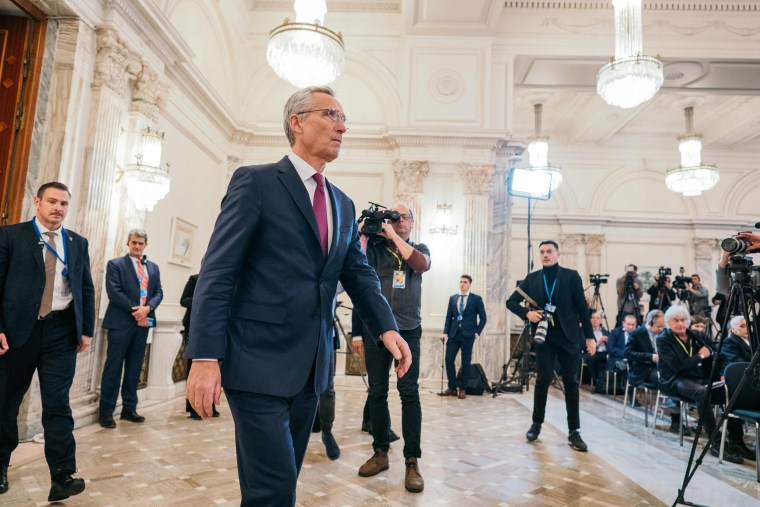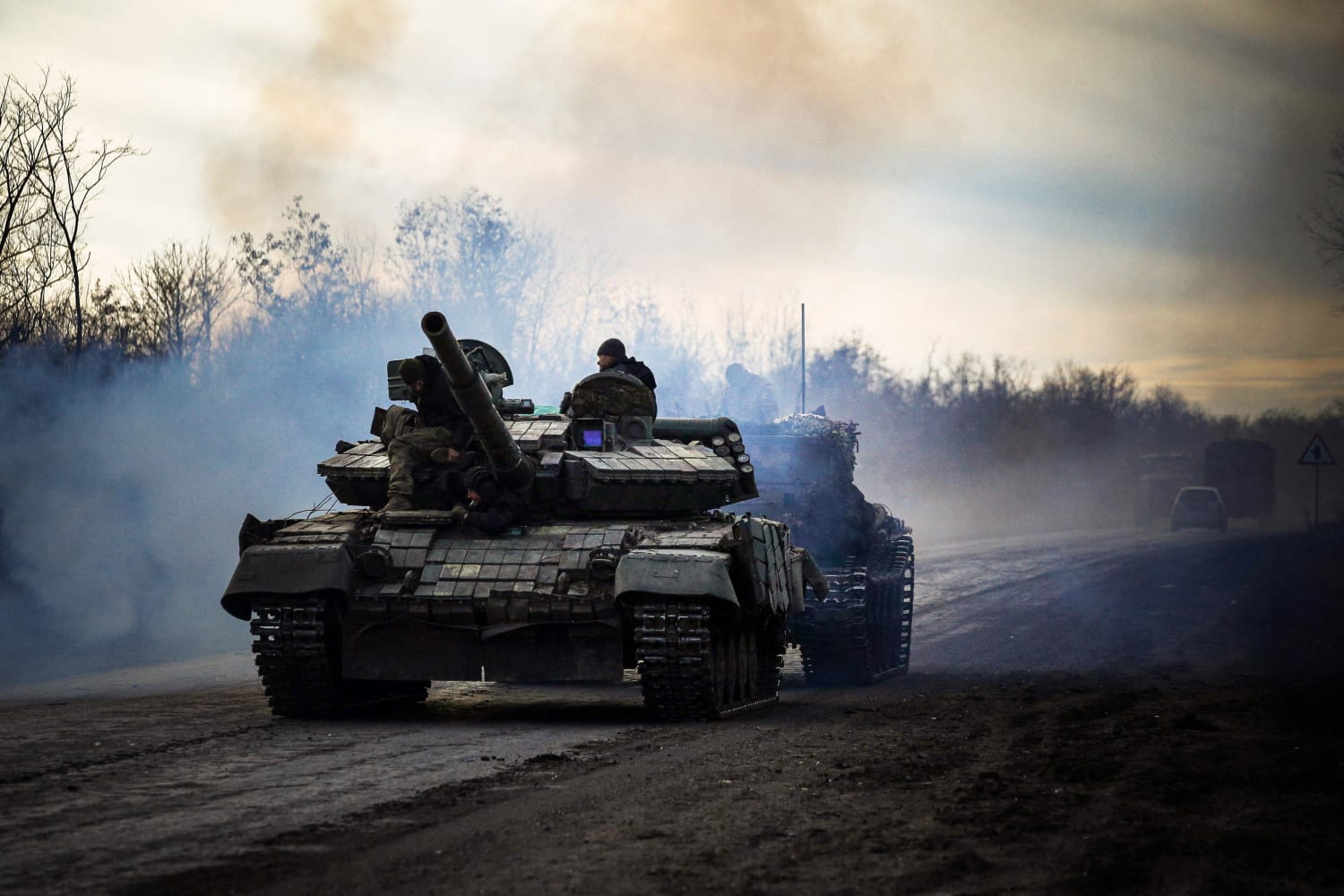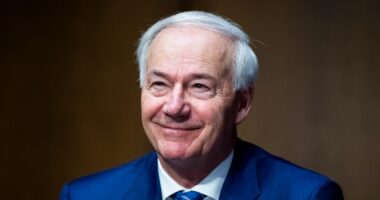Russian forces tried to advance in eastern Ukraine and trained tank, mortar and artillery fire on Kherson in the south, the Ukrainian military said, as Western allies sought to buttress Ukraine and its neighbors against Moscow.
In Washington, a $1.2 billion contract for six advanced surface-to-air missile systems known as NASAMS for Ukraine was awarded to Raytheon, the Pentagon said.
Ukrainian Foreign Minister Dmytro Kuleba said Wednesday his country needed U.S.-made Patriot missile defense systems to protect its civilian infrastructure, which has been under heavy attack by Russia at the start of winter.
Secretary of State Antony Blinken said Russian President Vladimir Putin had focused “his ire and his fire” on Ukraine’s civilian population and warned Russia that its strategy would fail to divide Ukraine’s supporters.
“Heat, water, electricity … these are President Putin’s new targets. He’s hitting them hard. This brutalization of Ukraine’s people is barbaric,” Blinken told a news conference in Bucharest following a two-day NATO meeting.
At the NATO foreign ministers meeting, allies Wednesday pledged to help Moldova, Georgia and Bosnia-Herzegovina as they face pressure from Russia, NATO Secretary-General Jens Stoltenberg and ministers said.
Russian Foreign Ministry spokesperson Maria Zakharova said the outcome showed NATO was “absolutely not interested in a political and diplomatic solution in Ukraine”.
Russia invaded Ukraine in February in what it calls a “special military operation” to rid Ukraine of nationalists it considers dangerous. Ukraine and its Western allies accuse Russia of an unprovoked, imperialist land grab.

Ukraine ordered all of Kyiv’s embassies abroad to strengthen security after two letter bombs were sent to the Ukrainian ambassador in Madrid and an arms company in Spain that manufactures rocket launchers donated to Ukraine. Spanish police said they were are examining a possible link between the two bombs, one of which injured an embassy security officer.
In the Donetsk region of eastern Ukraine, the site of the heaviest fighting, Russian forces tried to make further advances and shelled several towns, including Bakhmut and nearby Soledar and Opytne, the General Staff of the Ukrainian Armed Forces said in a statement Wednesday night.
On the southern front, it said, Russian forces took up defensive positions and trained tank, mortar and artillery fire on Ukrainian positions and on the regional capital of Kherson, they abandoned last month.
Other battleground activity was reported in northeastern and central Ukraine, the military said.
Reuters was not able to verify battlefield reports.
“We are analyzing the intentions of the occupiers and preparing countermeasures — tougher countermeasures than is now the case,” Ukrainian President Volodymyr Zelenskyy said in an address Wednesday evening.
Kyrylo Tymoshenko, the deputy head of Ukraine’s presidential administration, said electricity had been restored to 65% of consumers in Kherson.
Nearly 6 million customers in a majority of Ukraine’s regions and in Kyiv had no electricity, Zelenskyy said Wednesday.
Ukrainian Air Force spokesperson Yuriy Ignat said defense forces had shot down 340 of the roughly 400 Iranian drones that Russian had launched during the war.
“We haven’t seen these Iranian unmanned aerial vehicles for about two weeks … the first batch has probably already run out,” he told Ukraine’s main television network.
On the economic front, a deal was close on resuming Russian ammonia exports through a pipeline to a Ukrainian Black Sea port, United Nations aid chief Martin Griffiths said.
“I think we’re quite close, we’re edging towards it this week,” Griffiths told a Reuters NEXT event.
A deal aimed at easing global food shortages by helping Ukraine export its agricultural products from Black Sea ports was extended Nov. 17 for four months, though Russia said its own demands were yet to be fully addressed. The agreement was initially brokered in July by the U.N. with the help of Turkey.
Source: | This article originally belongs to Nbcnews.com










